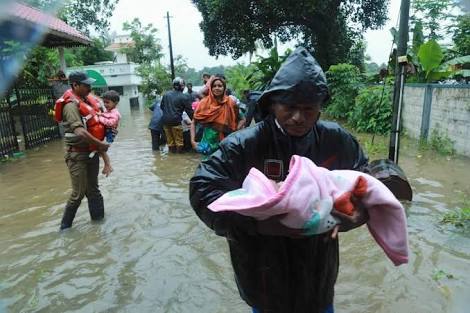Amidst the devastation faced by flood-hit Kerala and the ongoing rescue operations, experts claim that the crisis would have been less severe if the gates of 39 dams would have been opened to release water in the July end when their water levels reached 85–100% of the capacity, reported Hindustan Times.
According to the experts, to control the floods, reservoirs should be ‘relatively empty’ before the beginning of the rainy season. Himanshu Thakkar, coordinator of the South Asia Network for Dams, Rivers and People remarked that this was not done in Kerala. By July end, the Idduki dam was nearly full even when the rains were moderate, reported Livemint.
“This(floods) could have been avoided if the dam operators had started releasing water in advance rather than waiting for dams to be filled up, when they have no alternative but to release water”, he was quoted by BBC News.
When the situation grew worse, only then the water was released from 80 reservoirs. Thakkar added, “It is clear that major dams in the state – like Idukki and Idamalayar – only released water when Kerala was in the throes of heavy flooding, which actually proved to add further misery to the situation”, reported BBC News.
According to the data received from the Kerala State Electricity Board, the water levels in the reservoirs have been rising since mid-July. An IMD(Indian Meteorological Department) officer told Hindustan Times, “Yes, the rainfall was extremely heavy; much more than Kerala receives at this time of the year. However, the IMD had predicted that the extremely heavy rainfall was very likely and the state should have taken the decision to release water from the dams that were almost full when the rains had subsided in July.”
As per HT report, the amount of rainfall received in Kerala increased since the beginning of the monsoon season. The state had received 15% more rainfall in June and 18% more in July. The deluge which led to the heavy destruction and inundation began on August 8.
Ashok Keshari, a civil engineering professor in Delhi’s Indian Institute of Technology stated, “The flood damages could have been reduced by 20-40% had the dams and reservoirs released the water slowly in the two week period when the rains had subsided. The state did not have an advanced warning system in place and released water from the dams only once the danger levels (levels at which the dams structures can be damaged) were reached”, quoted HT.
Experts blamed the Centre for not warning Kerala before the disaster struck the state. Kerala got no early flood warning from Central Water Commission (CWC), a government agency. Thakkar said, “We are shocked to find that the agency has absolutely no flood forecasting sites. It has only flood monitoring sites in Kerala.” He advised, “It’s high time that the CWC includes some key dams like Idukki and Idamalayar and some key locations in its flood forecasting”, quoted BBC News.

